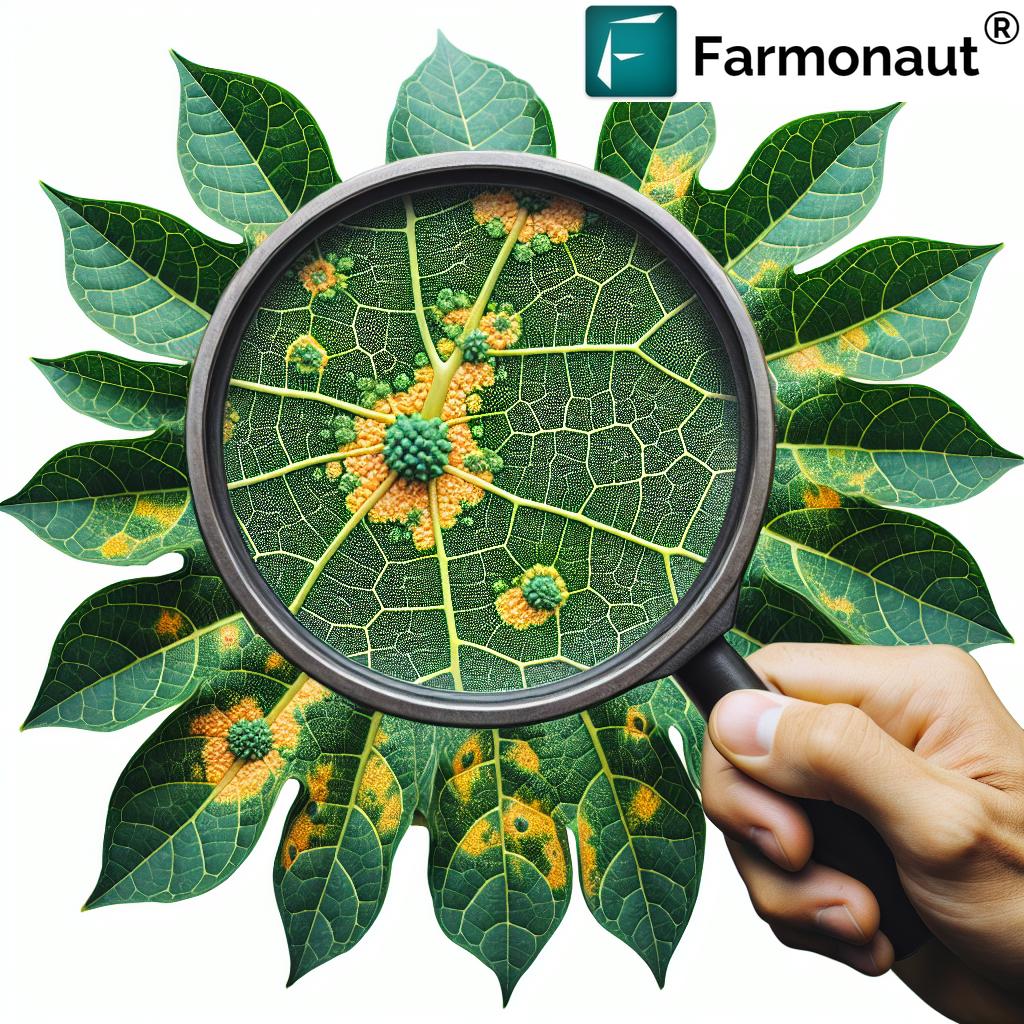Black Bugs on Citrus Tree: 7 Proven Pest Control Solutions
Meta Description: Discover effective pest management for black insects on citrus trees. Learn to identify, control, and prevent infestations for robust fruit health and orchard productivity.
“One citrus tree infested with black bugs can lose up to 30% of its fruit yield annually.”
Introduction: Why Citrus Needs Vigilant Pest Management
Citrus trees—whether lemon, orange, lime, or grapefruit—embody the very spirit of fruitful orchards with their lush foliage, fragrant blossoms, and vibrant, juicy fruits. Yet, beneath their glossy green canopy lurks a host of persistent adversaries: citrus tree pests. Among these, black insects such as scale, aphids, and blackflies are particularly notorious for compromising tree health, inviting sooty mold, and drastically reducing productivity.
If you are a citrus grower, horticulturist, or simply cherish your backyard citrus tree, understanding citrus pest identification, impact, and management strategies is crucial for ensuring robust orchards and maximizing fruit yield.
Identifying Black Insects on Citrus Trees: Species, Signs, and Symptoms
To build an integrated pest management for citrus and protect your fruit, we must first become acquainted with the common black insects affecting citrus trees. Below, we break down the key species, their biology, and telltale signs to watch for.
1. Black Scale (Saissetia oleae)
- Appearance: Oval, dome-shaped, dark brown to black, about 5mm (protective leathery cover over body)
- Where Found: Primarily infest leaves, twigs, branches
- What They Do: Suck sap, weaken plants, and excrete up to 4x their weight in honeydew daily
- Disease Link: Their sticky excretion leads to sooty mold on citrus leaves and impedes photosynthesis
2. Brown Citrus Aphid (Toxoptera citricida) – aka “Black Citrus Aphid”
- Appearance: Soft-bodied, dark brown to black aphid; small and pear-shaped
- Target: Feeds on new buds and leaves—especially young, tender growth
- Disease Vector: Transmits citrus tristeza virus, causing devastating effects on crops
- Signs: Leaves become flecked, speckled, distorted; plant stems curl; produces sticky honeydew causing sooty mold
3. Citrus Blackfly (Aleurocanthus woglumi)
- Appearance: Small, black, moth-like adult; white-waxy nymphs on leaf undersides
- Infestation Pattern: Eggs and nymphs on the undersides of leaves in clusters
- Feeding: Depletes sap, causing leaf yellowing, curling, and extensive honeydew for sooty mold growth
- Origin & Spread: Originally from India, now in most citrus-growing regions
4. Asian Citrus Psyllid (Diaphorina citri)
- Appearance: Small, brown-gray insect (not fully black, but highly relevant)
- Role: Main vector of Candidatus Liberibacter asiaticus—the bacterium causing citrus greening disease
- Symptoms: Causes leaf curl, yellow shoot disorders, and reduced fruit quality
5. Sooty Mold: The Black Sign of Infestation
- What It Is: Not a pest, but a telltale black, powdery or velvety fungal growth on leaves, stems, and fruit
- Cause: Grows on honeydew secreted by sap-sucking insects (black scale, aphids, blackflies)
- Impact: Sooty mold on citrus leaves disrupts sunlight penetration, blocking photosynthesis
6. Other Associated Scale Insects in Citrus
- While black scale (Saissetia oleae) is infamous, soft brown scale and purple scale can co-occur and contribute to sap draining and honeydew production.
7. How to Spot Infestations Early
- Look for black, shiny, dome-shaped scales or clusters of small aphids and blackflies on the undersides of leaves.
- Observe yellowing, dropping leaves, stunted growth, curled new shoots, sticky surfaces, and a black, sooty film.
Impact of Black Bugs on Citrus Tree Health & Fruit Yield
The presence of black insects on citrus trees triggers a chain of detrimental effects impacting both visible health and underlying productivity:
- Reduced Photosynthesis: Sooty mold on leaves blocks sunlight, impairs growth, and weakens plant energy.
- Continuous Sap Extraction: Aphids, scales, and blackflies drain essential nutrients. Result: stunted tree growth, fragile branches, premature fruit drop, and increased vulnerability to disease.
- Fruit Quality Decline: Persistent infestations result in deformed, speckled, or undersized citrus fruits, reducing market value and consumer appeal.
- Yield Loss: Year-on-year attack can decimate productivity—often up to 30% loss per tree if unmanaged.
- Spread of Devastating Diseases: The citrus tristeza virus (via brown citrus aphid) and citrus greening (via psyllids) are severe threats to orchard sustainability.
“Over 80% of sooty mold cases on citrus trees are linked to sap-sucking pests like scale insects.”
Citrus Pest Problem-Solution Comparison Table
| Pest Name | Estimated Prevalence (%) | Key Identifying Features | Damage Caused | Recommended Solution | Estimated Effectiveness (%) |
|---|---|---|---|---|---|
| Black Scale (Saissetia oleae) | 30% | Shiny, black domed scales; honeydew; sooty mold | Sap loss, sooty mold, leaf drop, twig dieback | Horticultural oils, pruning, natural predators | 80% |
| Brown Citrus Aphid (Toxoptera citricida) | 25% | Small, black-brown aphids; leaf curling/distortion; honeydew | Virus transmission, distorted leaves, fruit drop | Insecticidal soaps, biological control, monitor for virus | 75% |
| Citrus Blackfly (Aleurocanthus woglumi) | 20% | Tiny black adults, white-waxy nymphs on undersides of leaves | Sap feeding, sooty mold, yellowing, leaf drop | Parasitic wasps, horticultural oils, regular monitoring | 70% |
| Asian Citrus Psyllid (Diaphorina citri) | 15% | Small, brown insects; leaf curl/yellowing shoots | Citrus greening disease, stunted trees, reduced yield | Systemic insecticides, quarantine, removal of infected trees | 65% |
| Sooty Mold (Fungal Complex) | 85% | Black, powdery/velvety film on leaves, fruit, stems | Blocks sunlight, impairs photosynthesis, poor fruit set | Control honeydew insects, wash foliage, encourage predators | 90% |
7 Proven Pest Control Solutions for Black Insects on Citrus Trees
To combat citrus tree pests and prevent sooty mold on citrus leaves, it is critical to implement an integrated approach utilizing cultural, biological, and chemical controls. Here, we outline the most effective strategies:
1. Regular Monitoring & Early Identification
- Inspect leaves, branches, and undersides for sticky residue, black sooty patches, scale, and aphids.
- Caught early, infestations can be managed before affecting fruit yield.
Tools for Enhanced Monitoring:
Farmonaut’s satellite-based crop health monitoring provides timely alerts for pest or disease stress, highlighting areas needing immediate attention. Explore our Large-Scale Farm Management Solutions to remotely monitor orchard health and resource use.
2. Pruning and Sanitation: The First Defense
- Remove heavily infested or dead branches and twigs to reduce scale and blackfly breeding sites.
- Collect and dispose of fallen leaves and fruit to limit pest hatching zones.
- Encourages better air circulation and light penetration, reducing favorable pest microclimates and sooty mold growth.
Regular pruning not only improves citrus tree health but also allows for more effective application of natural or chemical controls.
3. Biological Controls: Encouraging Natural Predators of Citrus Pests
- Promote populations of ladybirds (ladybugs), lacewings, and other generalist predators that feed on aphids, scale insects, and blackflies.
- Encourage parasitic wasps such as Encarsia perplexa and Amitus hesperidum for citrus blackfly control.
- Reduce synthetic pesticide use to conserve beneficial species in the orchard ecosystem.
Intercropping, planting nectar-rich flowers, or maintaining diverse vegetation around the orchard enhances predator activity and reduces pest outbreaks.
4. Targeted Use of Horticultural Oils and Insecticidal Soaps
- Horticultural oils (e.g., mineral or neem oil) are used to suffocate and desiccate soft-bodied insects such as scale, aphid, and blackfly nymphs.
- Insecticidal soaps disrupt the waxy coating and are effective against aphids and blackfly populations.
- Apply late in the day to minimize risk to beneficial pollinators; repeat as needed for coverage.
Always follow label directions and avoid spraying when temperatures are extreme or trees are water-stressed.
5. Judicious Use of Chemical Controls
- Systemic insecticides may be necessary for severe infestations or when trees are at risk from disease vectors (e.g., citrus greening disease transmitted by psyllids).
- Avoid unnecessary, frequent spraying—overuse can promote resistance, decimate beneficial organisms, and pollute the environment.
- Opt for targeted, minimal applications and rotate chemical classes to prevent pest adaptation.
Whenever chemical controls are considered, always assess IPM compatibility and local regulations. Responsible use preserves ecosystem balance and supports robust orchards.
6. Physical Barriers and Washing
- Use physical barriers (sticky bands or mesh) to intercept crawling stage pests and prevent scale insects in citrus from colonizing new shoots.
- Manual washing of leaves and fruit with mild soapy water can reduce heavy sooty mold and honeydew, restoring photosynthesis and fruit shine, especially for backyard trees.
7. Quarantine and Removal of Infected Material
- For serious viral or bacterial disease outbreaks (e.g., citrus tristeza or greening), isolate or remove affected trees to prevent spread by vectors.
- Always sanitize pruning shears and hands after handling infested or infected material to prevent secondary transmission.
Harnessing Technology for Citrus Pest Management
Today, precision agriculture and remote sensing can dramatically upgrade how we protect citrus orchards. At Farmonaut, we integrate advanced technologies to enable sustainable and data-driven citrus pest management:
- Satellite-Based Crop Health Monitoring: Detect pest and disease hotspots in real-time, assess variability in growth, and target interventions only where needed. This saves resources and preserves beneficial organisms.
- Jeevn AI Advisory System: Our AI-driven tool delivers personalized pest risk alerts, weather-based guidance, and crop management recommendations for optimizing pest control windows.
- Blockchain-Based Traceability: Enhance product traceability and market trust by transparently documenting every input and intervention in your orchard—from pest management to harvest—ensuring fruit quality and consumer confidence.
- Resource Management & Fleet Tracking: For large orchards and agribusinesses, efficient resource and fleet tracking tools are available. Visit our Fleet Management page to learn how to streamline logistics for timely pest and resource applications.
- Carbon Footprint Tracking: Monitor the sustainability and environmental impact of your management strategies. Learn more about reducing the carbon impact of your orchard operations here.
Our API Access allows developers and agribusinesses to integrate these datasets into their platforms for seamless, real-time orchard monitoring and reporting. Explore our API access and developer docs for custom integrations.
Affordable Precision Farm Management for Citrus Orchards
With Farmonaut, you can access affordable subscription options designed for every scale—backyard growers, commercial orchards, and agribusinesses—ensuring you only pay for what you need. Check our real-time satellite-based pest detection, climate smart advisory, and reporting tools below:
Preventive Measures to Safeguard Citrus Trees from Black Pest Infestations
Strong prevention is the bedrock of citrus tree pest management. Consider these best practices:
- Maintain Tree Health: Proper watering, fertilization, and periodic pruning bolster natural resistance against pests and disease.
- Encourage Biodiversity: Plant nectar and pollen sources around your orchard to attract and sustain natural predators of citrus pests.
- Avoid Overuse of Chemicals: Limit synthetic pesticides to emergencies to preserve beneficials and prevent pest resurgence.
- Use Disease-Free Planting Material: Source certified healthy rootstock and buds to avoid introducing primary pest and disease reservoirs.
- Adopt Clean Orchard Practices: Remove and destroy weeds, fallen fruit, and dead wood; regularly disinfect tools and containers.
By integrating these steps with advanced monitoring tools, growers can ensure citrus fruit yield protection for seasons to come.
Frequently Asked Questions about Black Bugs on Citrus Trees
What causes sooty mold on citrus leaves?
Sooty mold is a black, powdery to velvety fungal growth that develops on citrus leaves, fruit, and stems wherever sticky honeydew is excreted by sap-sucking insects such as aphids, scale insects, and blackflies. Effective pest control will prevent most sooty mold outbreaks.
How can I distinguish between black scale and sooty mold?
Black scale insects are shiny, dome-shaped bumps on leaves, twigs, and stems—peel away easily with a fingernail. Sooty mold is superficial, can be wiped away, and appears as a dusty, black coating on leaves and fruit. Mold is a symptom; scales are the pest causing it!
What are the best natural controls for citrus aphid infestation?
Natural controls include encouraging ladybugs, lacewings, and parasitic wasps, all of which feed on aphids. Avoid broad-spectrum insecticides, provide floral/nectar resources nearby, and wash minor infestations with soapy water. Always monitor for associated virus symptoms.
When should I use chemical controls on citrus trees?
Only use chemical (synthetic) insecticides if infestations are severe and threaten crop loss, or when managing vectors of devastating viral/bacterial disease. Always read labels, rotate chemicals, and avoid use around pollinators or beneficial insects for sustainable management.
How does integrated pest management work for citrus?
Integrated Pest Management (IPM) combines frequent monitoring, cultural controls (pruning, sanitation), biological controls (encouraging predators and parasitoids), and selective chemical applications only when essential. This strategy supports orchard health, fruit quality, and environmental sustainability.
Conclusion: Citrus Pest Control for a Healthy, Productive Future
Citrus trees remain iconic symbols of agricultural abundance. But these treasures of the orchard are particularly susceptible to black insects—scale, aphids, blackfly—and related threats that promote sooty mold, disease, weakened growth, and major yield loss.
Successful citrus pest management hinges on combining vigilant monitoring, early identification, and smart deployment of cultural, biological, and chemical controls. Growers must encourage natural predators of citrus pests and adopt preventive measures to ensure strong, resilient trees.
At Farmonaut, our mission is to empower every citrus grower. By harnessing satellite monitoring, AI-driven advisory, blockchain traceability, and affordable resource management, we make sustainable and high-tech orchard management accessible for everyone—from smallholder plots to commercial citrus plantations.
Protect your trees, preserve your yield, and enjoy citrus fruits at their brightest flavor and highest quality—year after year.











